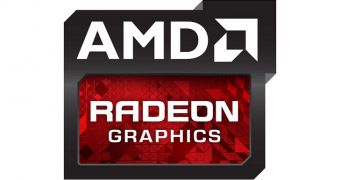We finally know exactly what AMD's next-generation high-end GPU can do, and it's all thanks to the folks at 3DCenter.org
, who leaked the specifications of that very graphics processing unit.
Sure, the R9/R7 graphics cards were revealed by HIS not long ago, and some info on the Hawaii GPU came even more recently, but actual details were sparse until now.
As one can easily assume, Hawaii is the best graphics chip from the Volcanic Islands lineup. It wouldn't be used in the R9 290X otherwise.
To elaborate, the R9 line is made of the high-end graphics cards, and the R9 290X is, as far as we know, the best in that set of boards.
Anyway, Hawaii is about 18% larger than the Tahiti used in the Radeon HD 7970. A consequence of being unable to move to a smaller manufacturing process technology.
Which is to say, Hawaii is a 28 nm chip like Tahiti, not a 20 nm chip as some may have been hoping.
Yet the technological improvements exceed 18%. The number of stream processors, for example, is of 2,816.
These SPs are grouped in 44 clusters of 64 SPs each. This all shows a 37.5% increase compared to the previous generation.
Also, instead of two independent raster engines, there are four, which leads to twice the geometry processing capabilities.
Together, these specifications suggest a very good performance advantage for this chip based on the Graphics CoreNext micro-architecture.
It's unclear what memory interface will be used, but the odds are high for one of 384 bits (GDDR5 naturally).
Finally, Hawaii will boast 32 or 48 ROPs, 176 TMUs and hardware support for DirectX 11.2 technology, including the mega-texture feature (shared resources). We'll have more on this once that webcast happens on September 25.
AMD's Hawaii-based Radeon R9 290X graphics card will be pitted against NVIDIA's GeForce GTX 780 (GK110).

 14 DAY TRIAL //
14 DAY TRIAL //